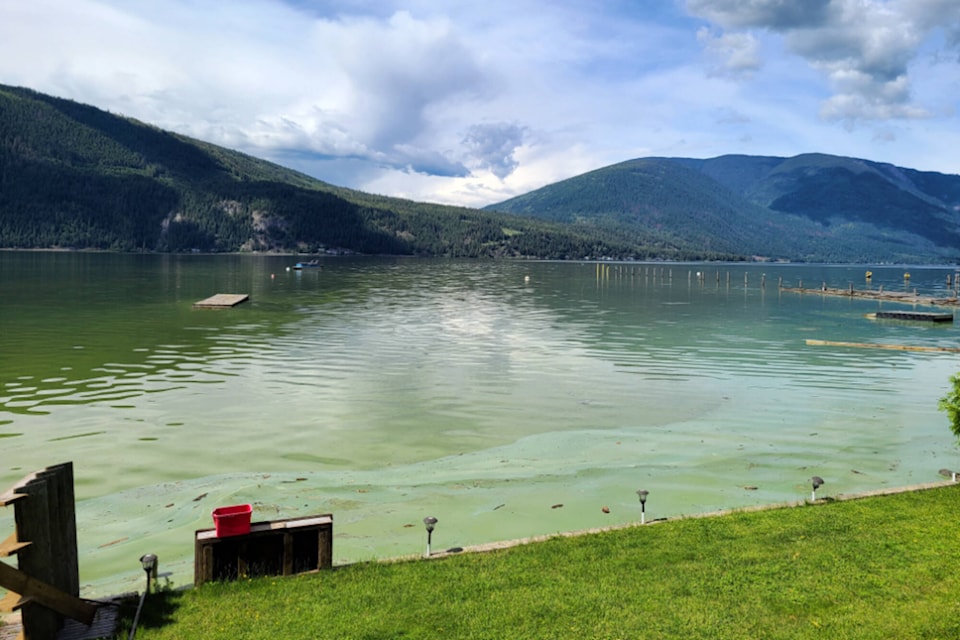A new report looking at changes in Shuswap water quality builds on years of research.
The Shuswap Watershed Council released an update to its 2020 report, which summarized a multi-year study on the quality and safety of regional bodies of water, conducted in partnership with the University of British Columbia Okanagan.
Two separate research projects have been ongoing on both the Shuswap and Mara lakes, with a goal to better understand nutrient input in both the bodies of water, reads the Shuswap Watershed Council���߲��о����s (SWC) release.
Primary objectives of the research were to see where the nutrients in the Shuswap watershed are coming from, and to understand historic nutrient sources and conditions to see how they���߲��о����ve changed in the last few hundred years.
���߲��о����Nutrients such as phosphorus and nitrogen are an important factor of water quality,���߲��о���� explained Erin Vieira, program manager for the SWC. ���߲��о����We tend to think of nutrients as a good thing ���߲��о���� and they are if they���߲��о����re balanced in an ecosystem. But, too many nutrients in a lake can trigger an algal bloom and that can pose a health risk, and it can impact our enjoyment of the lake and the tourism economy.���߲��о����
The first project was completed in 2019, and found a ���߲��о����phosphorus budget���߲��о���� in the Shuswap and Salmon rivers, meaning the settled valley bottoms where agriculture is the main land use is the biggest contributor of nutrients into the rivers, while the rivers���߲��о���� headwaters are very low in nutrients. The budget was found by UBCO research teams collecting and sampling water from 100 different sites on the rivers.
A second project, completed in 2021, offers updated reports. Collection and analysis of sediment core from the bottom of Mara Lake, and paleolimnology studies that examine fossils in sediment to understand past environmental conditions show nutrient levels in Mara Lake have been rising for 40 years.
The SWC offers incentives and education to help residents reduce impacts on the watershed. The Water Quality Grant Program provides financial assistance to farms and stewardship groups to mitigate nutrient loss. Projects can include development of wetlands, riparian enhancements, regenerative agriculture practices and more.
Regulating sources of nutrients is a responsibility of provincial and federal governments, said the SWC.
���߲��о����We���߲��о����ve made the authorities aware of our concerns about the algal blooms and about the research we���߲��о����ve done,���߲��о���� said Jay Simpson, SWC chair. ���߲��о����We���߲��о����re at a point where excessive nutrients flowing into the lakes is a serious threat to water quality.���߲��о����
Vieira also responded to questions about wildfires and their impacts to the nutrient load.
She said it���߲��о����s possible, and likely, nutrients will be increasingly flushed into lakes over the next few years. This concern has also been brought to the BC Ministry of Environment.
���߲��о����The SWC hasn���߲��о����t identified any specific new responses to mitigate the impact of the fires,���߲��о���� she said. ���߲��о����However, our water quality grant program is geared to assist with that.���߲��о����
Projects like replanting in riparian areas could speed up ���߲��о����shield, sponge and filter���߲��о���� process in forests to store and filter water as it goes through a watershed, preventing erosion. Vieria acknowledged the grant program would only have a small impact when faced with the scale of the Shuswap wildfires of 2023.
The watershed council���߲��о����s operation has been extended for a year following a rescheduled referendum, with a vote to decide its future planned for early 2024.
Read more:
Read more:
for our newsletter to get Salmon Arm and Sicamous stories in your inbox every morning



